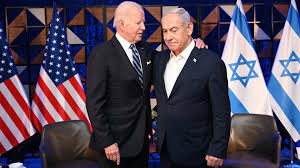Colonial dreams: The unattainable vision of a reconfigured Middle East

MADRID- As explained by Portuguese international relations expert Bruno Maçaes, Israel, alongside the United States, believes that the situation in the region is ripe for a political reconfiguration that eliminates all obstacles to its hegemony. Maçaes describes this moment as "liquid," suggesting that Israel sees parallels with 1967, when it successfully defeated Arab forces and annexed parts of Palestine, such as East Jerusalem (al-Quds).
Rather than facing a coalition of Arab states, Israel currently confronts the Axis of Resistance, an alliance of states, movements, and fighters that share a common goal of reducing U.S. and Israeli influence in the region. This desire to politically reconfigure the region is not new. Since 1979, with the establishment of the Islamic Republic of Iran, both Israel and the United States have sought, through various means, a regime change in Tehran. In addition to this objective, both countries have aimed to keep Iran isolated and weakened through economic sanctions. Within this framework of "containment," they have also sought to oppose Iran's nuclear development, considering it a threat to their interests.
The policy of containment, isolation, and regime change in Iran intensified a year ago, right after Hamas's "Flood of Al Aqsa" operation. This campaign is rooted in a colonial revanchism approach that seems to know no end or limit.
During the summer, supported by U.S. backing, Israel redirected its attention toward Lebanon and Hezbollah. In this context, in July, it assassinated Fouad Shukur, a key figure within the Lebanese group, and carried out several terrorist attacks using surveillance devices, walkie-talkies, and other electronic tools. This hyperconfidence led Israel to believe that, following the blows dealt to Hezbollah, the group had been weakened to the point of no longer being a threat to the Zionist colonial project. In this view, the alleged weakening of Hezbollah was seen as a precursor to a direct confrontation with Iran.
The name given by Iranian military officials to the operation against the Lebanese group, "Operation New Order," underscores the intention to reconfigure the region and eliminate all obstacles to that reconfiguration.
This strategy also includes a video of Israeli Prime Minister Benjamin Netanyahu, supposedly addressing the Iranian people, in which he claimed that regime change in the Islamic Republic was imminent. All of the above exemplifies Israeli hyperconfidence in considering the region as ripe for its political and strategic intentions to modify its structure. The United States, as pointed out by several experts, including Mouin Rabbani, shares this view and believes that this regional "liquid moment" could be beneficial for them. What was once a remote possibility now presents itself as a reality within reach.
In this strategy, it is crucial to mention Netanyahu's desire not to be remembered as the individual responsible for the greatest intelligence failure in the history of the Zionist entity (on October 7), but rather as the leader who reconfigured the region in favor of Israel. However, this does not imply that Netanyahu is alone in his genocidal campaign, nor that the majority of the Israeli population does not support colonial expansion at the expense of Palestinian and Lebanese lives.
That said, one must ask: what would the region look like if reconfigured according to Zionist colonial fantasies? Firstly, the Axis of Resistance would be dismantled. Hamas would be eliminated, and Hezbollah, if it were to continue to exist, would be reduced to a mere token role. The Yemeni group Ansarullah would lose all its influence, and Iran would be transformed following the example of Iraq.
Another outcome of this reconfiguration would be the complete normalization between Israel and Arab countries. The Palestinian issue would cease to be relevant in a region where the Axis of Resistance would not hold the influence it currently does. Without the active presence of Palestinian resistance, Israel could annex all of Palestine and force a massive expulsion of the surviving Palestinian population, amid a continuous genocide.
However, this political vision is a fantasy rooted in the rejection of any form of “political enjoyment” that threatens Zionist identity. Behind this fantasy of reconfiguration lies the initial impulse to literally eliminate those political forms that oppose this enjoyment, which is colonial and, therefore, expansionist.
Despite this genocidal impulse, Israel has not succeeded in eliminating Hamas; the group continues to fight against the occupation in Gaza and inflicts considerable damage on colonial troops. Similarly, it has not weakened Hezbollah, which continues to maintain and expand its military operations. The Israeli strategy has also failed to subdue Iran through threats; the “True Promise II” operation is a clear example of this incapacity. Ansarullah, for its part, remains strong, and its presence in the Red Sea continues to pose multiple problems for Israel and its allies.
It is evident that, despite Israel's intention to weaken or defeat the Axis of Resistance to achieve the long-desired regional reconfiguration, it has accomplished nothing after more than a year of genocidal violence, and it is unlikely to succeed in the future. The Zionist fantasy transforms into an obsessive neurosis that seeks to reshape a situation that eludes its control, driven by its colonialism and genocide.
The desire for regional reconfiguration by Israel is, therefore, an unattainable yearning that reproduces itself in every massacre and in every act of death and oppression. The images of death and destruction are, nonetheless, a reflection of the Zionist panic when confronted with a region that not only fails to meet its desires but is also willing to deny them. This Zionist incapacity turns into panic at the prospect of its own dismantlement.
Leave a Comment